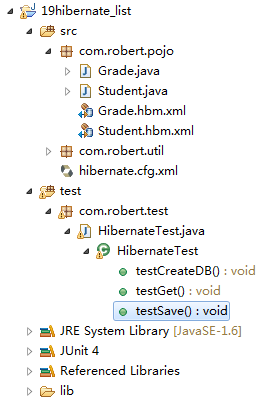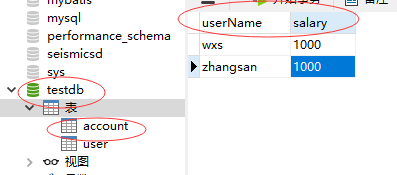【STL容器学习】-关联容器与map的使用方法
STL提供了4个关联容器:set、multiset、map和multimap。这些容器提供了通过关键字快速存储和访问数据元素的能力。Set和map不允许有重复关键字,而multiset和multimap允许重复关键字。关联容器的几个共同函数如下:
find(key):搜索容器中具有指定关键字的元素,返回指向此元素的迭代器。
lower_bound(key):搜索容器中具有指定关键字的第一个元素,返回指向此元素的迭代器。
upper_bound(key):搜索容器中具有指定关键字的最后一个元素,返回指向此元素的迭代器。
count(key):返回容器中具有指定关键字的元素的数目。
Map是比较重要的STL容器,本文主要来介绍map的原理和一些常见的用法。
1.map实现的原理
Map内部自建一个一颗红黑树,一种严格意义上的平衡二叉树,这颗树具有对数据自动排序的功能,所以在map内部所有的数据都是有序的。
2.数据插入
1)用insert函数插入pair数据。
2)用insert函数插入value_type数据。
3)用数组方式插入数据。
以上三种方法,都可以实现插入操作,但是还是有区别的。用insert函数进行插入操作时,在数据的插入上涉及到集合的唯一性这个概念,即当map中有key值时,insert操作无法插入数据。但是如果是用数组方式就不同了,它可以覆盖以前关键字对应的值。可以用pair来获得是否插入成功,Pair
代码举例及分析如下:
#include <iostream>#include <map>#include <string>using namespace std;int _tmain(int argc, _TCHAR* argv[]){map<int,string> map1;map1.insert(pair<int,string>(1,"John")); //insert pair的方式插入map1.insert(pair<int,string>(1,"Jeff")); //不会再执行插入操作map1.insert(map<int,string>::value_type(2,"King")); //insert value_type的方式插入map1.insert(map<int,string>::value_type(2,"Jane")); //不会再执行插入操作map1[3]="Peter"; //数组方式插入map1[3]="Smith"; //会覆盖掉上一个值map<int,string>::iterator p; //迭代器遍历输出for(p=map1.begin();p!=map1.end();p++){cout<<p->first<<"\t"<<p->second<<endl;}pair<map<int, string>::iterator, bool> insert_pair; //用pair判断是否成功插入数据insert_pair=map1.insert(pair<int,string>(4,"Kevin"));if(insert_pair.second) //判断是否插入成功{cout<<"Insert Kevin Successfully"<<endl;}else{cout<<"Insert Kevin failed"<<endl;}insert_pair=map1.insert(pair<int,string>(4,"Cathy"));if(insert_pair.second){cout<<"Insert Cathy Successfully"<<endl;}else{cout<<"Insert Cathy failed"<<endl;}for(p=map1.begin();p!=map1.end();p++){cout<<p->first<<"\t"<<p->second<<endl;}return 0;}
执行结果为:
1 John
2 King
3 Smith
Insert Kevin Successfully
Insert Cathy failed
1 John
2 King
3 Smith
4 Kevin
3.数据遍历
1)应用前向迭代器
2)应用反向迭代器
3)用数组方式
代码及分析如下:
#include <iostream>#include <map>#include <string>using namespace std;int _tmain(int argc, _TCHAR* argv[]){map<int,string> map1;map1.insert(pair<int,string>(1,"John"));map1.insert(pair<int,string>(2,"Jeff"));map1.insert(pair<int,string>(3,"Smith"));map<int,string>::iterator it; //前向迭代器遍历输出cout<<"应用前向迭代器输出:"<<endl;for(it=map1.begin();it!=map1.end();it++){cout<<it->first<<"\t"<<it->second<<endl;}map<int,string>::reverse_iterator reverse_it; //反序迭代器cout<<"应用反向迭代器输出:"<<endl;for(reverse_it=map1.rbegin();reverse_it!=map1.rend();reverse_it++){cout<<reverse_it->first<<"\t"<<reverse_it->second<<endl;}int size = map1.size();cout<<"应用数组方法输出:"<<endl;for(int index=1;index<=size;index++){cout<<index<<"\t"<<map1[index]<<endl;}return 0;}
执行结果为:
应用前向迭代器输出:
1 John
2 Jeff
3 Smith
应用反向迭代器输出:
3 Smith
2 Jeff
1 John
应用数组方法输出:
1 John
2 Jeff
3 Smith
4.数据查找
1)用count函数判断关键字是否出现,它的缺点是不能定位关键字的位置。
2)用find函数,它会返回一个迭代器,如果查找到数据,则返回数据所在位置的迭代器,如果没有查找到,则返回end迭代器。
代码及分析如下:
#include <iostream>#include <map>#include <string>using namespace std;int _tmain(int argc, _TCHAR* argv[]){map<int,string> map1;map1.insert(pair<int,string>(1,"John"));map1.insert(pair<int,string>(2,"Jeff"));map1.insert(pair<int,string>(3,"Smith"));map<int,string>::iterator it; //前向迭代器遍历输出cout<<"应用前向迭代器输出:"<<endl;for(it=map1.begin();it!=map1.end();it++){cout<<it->first<<"\t"<<it->second<<endl;}if (map1.count(1)!=0) //用count函数来进行查找{cout<<"1 is in map"<<endl;}else{cout<<"1 is not in map"<<endl;}if(map1.find(4)!=map1.end()) //用find函数来进行查找{cout<<"4 is in map"<<endl;}else{cout<<"4 is not in map"<<endl;}return 0;}
执行结果为:
应用前向迭代器输出:
1 John
2 Jeff
3 Smith
1 is in map
4 is not in map
5.map使用[ ]符号注意事项
使用[ ]对map进行插入或者查找操作非常便捷,但是如果map下标符运用不得当,就会造成意想不到的问题。对于map而言,并没有下标越界的概念,但是却有可能发生关键字在map中不存在的问题。如果访问的关键字在map中并不存在,则map会自动生成相应的关键字,并会给定一个默认的初始值。
代码和解析如下:
#include <iostream>#include <map>#include <string>using namespace std;int _tmain(int argc, _TCHAR* argv[]){map<int,string> map1;map1.insert(pair<int,string>(1,"John"));map1.insert(pair<int,string>(2,"Jeff"));map1.insert(pair<int,string>(3,"Smith"));if (map1[4] == "Kevin") //4不存在,map会自动添加,并初始化值为空,即“”{map1[4]="Cathy";}map<int,string>::iterator it; //前向迭代器遍历输出cout<<"应用前向迭代器输出:"<<endl;for(it=map1.begin();it!=map1.end();it++){cout<<it->first<<"\t"<<it->second<<endl;}return 0;}
执行结果为:
应用前向迭代器输出:
1 John
2 Jeff
3 Smith
4
如输出所示,最后输出4的值为空。这是因为在进行查找操作时,map自动添加4为关键字,且它的值为空。所以,判断语句一直不成立,最后输出仍然为空。


































还没有评论,来说两句吧...